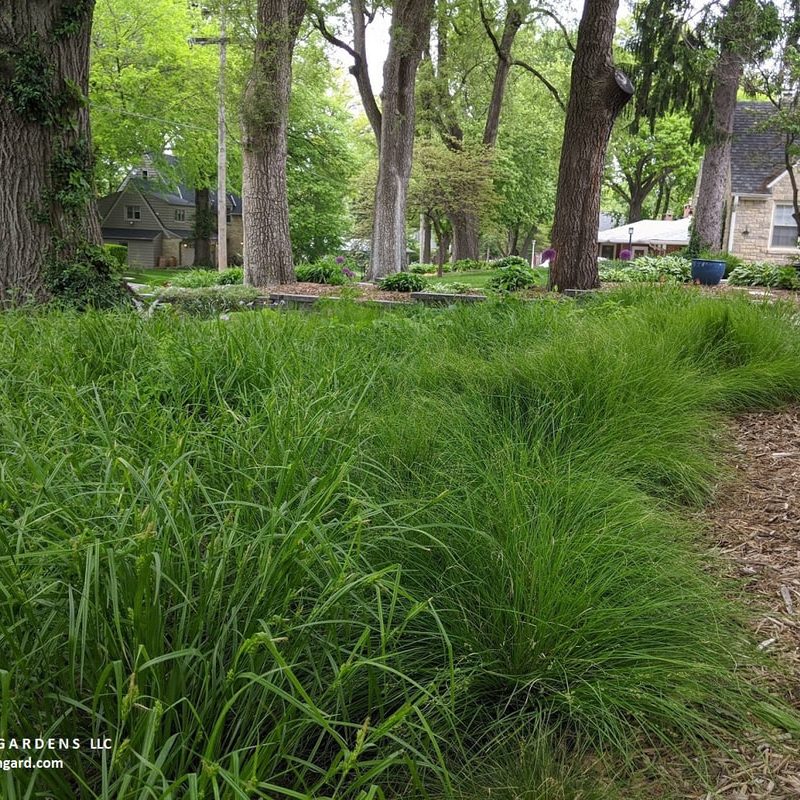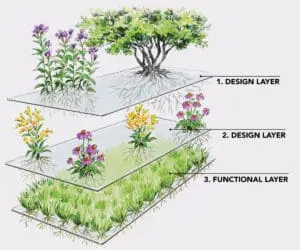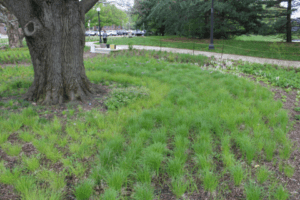
Green Mulches – Keeping your Weeds Suppressed and Soil Protected
One type of mulch you may have never heard about before is a green mulch, also known as “Soft landings” – isn’t that cute? It can also be called the “Functional Layer”.
These are live plants that act as mulch with all of the additional benefits of plant interaction in a shared garden space. A tradition long held in agriculture, the application of living mulch or cover crops provides all the same benefits as
(dead) organic mulch with the addition of erosion reduction from the plants’ root systems as well as
increased nutrition when they are turned under the soil at the end of the growing season. Over time,
the soil health will improve with the regular application of green mulch.
Mulch is any material that is spread between plants in a garden. People use mulch for a variety of
reasons, including creating a unified visual effect to make plants stand out, helping plants to retain
moisture, reducing pathogens that travel in the soil with the aid of healthy fungi, stabilizing soil
temperatures, and reducing weed competition for resources (water, oxygen and nutrients).
There are many different types of mulches available on the market. Wood chips, wood shreds, leaf
compost, grass clippings, straw/hay, pine needles and paper or cardboard are some of the organic non-
living options. As these mulches break down over time, they release nutrients into the soil for your
plants.
Synthetic mulches, such as rubber mulch, are another option. Although, the use of this type of mulch makes
absolutely no sense for the eco-minded gardener, as it is an introduction of non-organic material that
won’t naturally break down into our ecosystem, thus offering no nutritional benefit to plants or gardens
and requiring removal annually.
One type of mulch you may have never heard about before is a green mulch, also known as “Soft landings” – isn’t that cute? It can also be called the “Functional Layer”.
These are live plants that act as mulch with all of the additional benefits of plant interaction in a shared garden space. A tradition long held in agriculture, the application of living mulch or cover crops provides all the same benefits as
(dead) organic mulch with the addition of erosion reduction from the plants’ root systems as well as
increased nutrition when they are turned under the soil at the end of the growing season. Over time,
the soil health will improve with the regular application of green mulch.

Photo by Layne Knoche. Planting grasses beneath tree canopies that do not need to be mowed, such as this fescue at the Red Oak Rain Garden in Urbana, ensures that the caterpillars of moths and butterflies survive to adulthood.
To use a green mulch, consider the time of year that you will be installing your garden. If it will be in
early spring or summer, you’ll want to use a tender plant that does better in heat, such as vetch, clover,
alfalfa, buckwheat or beans. If your garden will be planted later on in summer or in the fall, plant a cold-
loving plant such as ryegrass, rapeseed, or oats. Once the season for your garden is over, turn the cover
crop into the soil to add all the nutrients that were cultivated throughout the growing season back into
the soil. This will reduce weed growth and increase beneficial soil microorganisms.
Other green mulches include sedge (a clumping grass-like plant), ajuga (an herbaceous flowering plant
with beautiful colorful leaves), and sedum (a spreading succulent-like plant available in a variety of
styles).

Photo of grass, self heal and clover
Best case scenario? Mix in some native plants as your green mulch to help out pollinators. In MN,
these include Viper’s blugloss (Echium vulgare; make sure you don’t have horses or livestock as it is toxic
for them); Maiden pink (Dianthus deltoides); Trailing Pea (Strophostyles leiosperma); Wild Ginger
(Asarum canadense); Woodland Strawberry (Fragaria vesca); Wild Geranium (Geranium maculatum) or
Hoary Puccoon (Lithospermum canescens). Additionally, native clumping grasses and sedges such as
Carex prairea make excellent green mulches.
-Maddy Kaudy,
Writer, Master Gardener
http://www.ladybug.uconn.edu/FactSheets/mulch-basics.php
https://extension.unh.edu/resource/garden-mulches-fact-sheet
https://extension.umn.edu/how-manage-soil-and-nutrients-home-gardens/cover-crops-and-green-
manures
Minnesota Native Plants List: 12 Stunning Wildflowers for Your Landscape
https://extension.umn.edu/fruit/growing-strawberries-home-garde


